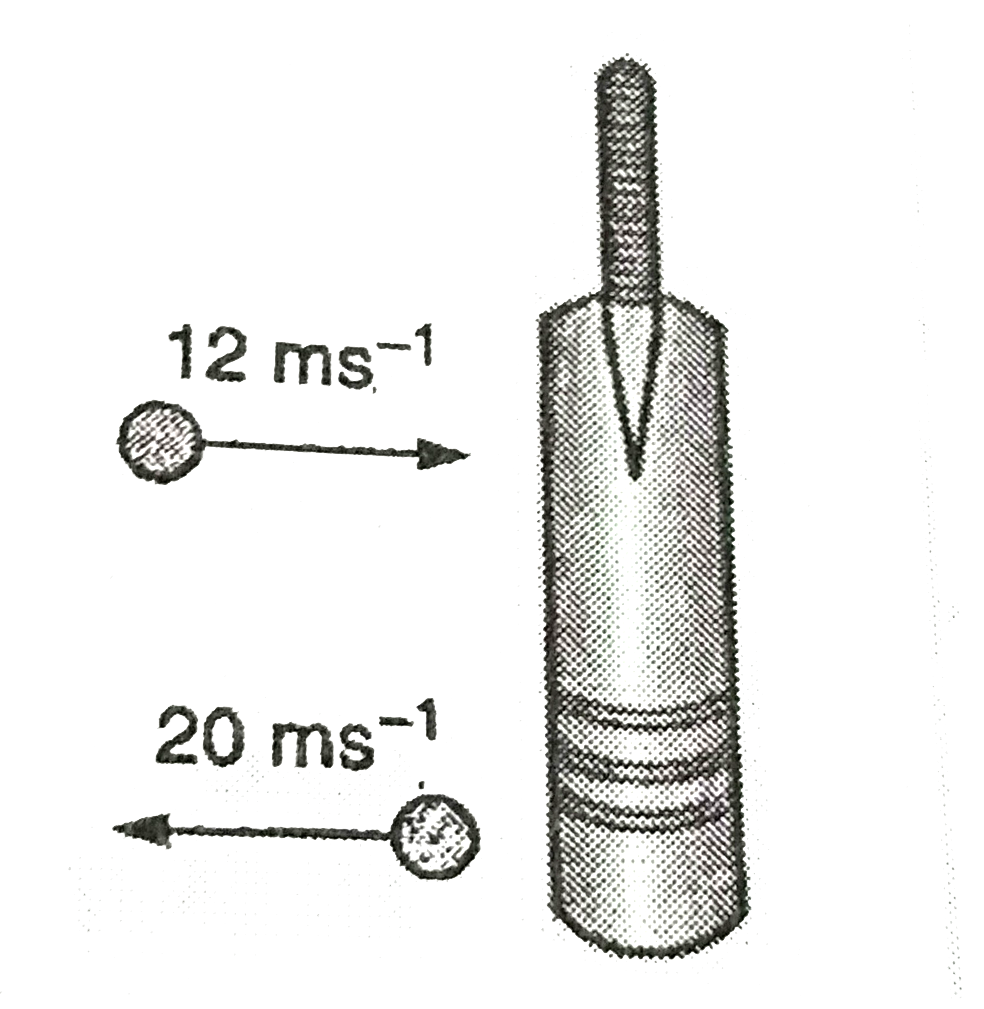A ball of mass 10 g is moving with a velocity of 50ms−1. On applying a constant force on ball for 2.0 s, it acquires a velocity of 70ms−1. Calculate the initial momentum of ball
To solve the problem, we need to calculate the initial momentum of the ball using the formula for momentum, which is given by:
Momentum(p)=mass(m)×velocity(v)
1. Convert the mass from grams to kilograms:
- Given mass of the ball = 10 g
- To convert grams to kilograms, we divide by 1000:
m=10 g1000=0.01 kg
2. Identify the initial velocity:
- The initial velocity of the ball is given as 50 m/s.
v1=50 m/s
3. Use the momentum formula:
- Now that we have the mass and the initial velocity, we can calculate the initial momentum:
p=m×v1
Substituting the values:
p=0.01 kg×50 m/s
4. Calculate the momentum:
- Performing the multiplication:
p=0.01×50=0.5 kg m/s
5. Final Answer:
- Therefore, the initial momentum of the ball is:
p=0.5 kg m/s
- Given mass of the ball = 10 g
- To convert grams to kilograms, we divide by 1000:
m=10 g1000=0.01 kg
- The initial velocity of the ball is given as 50 m/s.
v1=50 m/s
- Now that we have the mass and the initial velocity, we can calculate the initial momentum:
p=m×v1
Substituting the values:
p=0.01 kg×50 m/s
- Performing the multiplication:
p=0.01×50=0.5 kg m/s
- Therefore, the initial momentum of the ball is:
p=0.5 kg m/s
Topper's Solved these Questions
- LAWS OF MOTIONBOOK - ICSECHAPTER - LAWS OF MOTIONEXERCISE - TOPIC 3 (2 Marks Questions )
9 Videos
- LAWS OF MOTIONBOOK - ICSECHAPTER - LAWS OF MOTIONEXERCISE - TOPIC 3 (3 Marks Questions )
7 Videos
- LAWS OF MOTIONBOOK - ICSECHAPTER - LAWS OF MOTIONEXERCISE - TOPIC 2 (3 Marks Questions )
11 Videos
- ICSE ANNUAL EXAMINATION -2020BOOK - ICSECHAPTER - ICSE ANNUAL EXAMINATION -2020EXERCISE - SECTION-II
45 Videos
- LIGHTBOOK - ICSECHAPTER - LIGHTEXERCISE - TOPIC 2 Spherical Mirrors (4 Marks Questions )
9 Videos
Similar Questions
A ball of mass 10 g is moving with a velocity of 50ms−1. On applying a constant force on ball for 2.0 s, it acquires a velocity of 70ms−1. Calculate the final momentum of ball
View SolutionA ball of mass 10 g is moving with a velocity of 50ms−1. On applying a constant force on ball for 2.0 s, it acquires a velocity of 70ms−1. Calculate the rate of change of momentum
View SolutionA ball of mass 10 g is moving with a velocity of 50ms−1. On applying a constant force on ball for 2.0 s, it acquires a velocity of 70ms−1. Calculate the acceleration of ball
View SolutionA ball of mass 10 g is moving with a velocity of 50ms−1. On applying a constant force on ball for 2.0 s, it acquires a velocity of 70ms−1. Calculate the magnitude of force applied.
View SolutionA ball of mass 0.2 kg moves with a velocity of 20m/sec and it stops in 0.1 sec , then the force on the ball is
View SolutionA ball of mass 0.2 kg moves with a velocity of 20m/sec and it stops in 0.1 sec , then the force on the ball is
View SolutionA ball of mass 0.5 kg is moving with a velocity of 2ms−1. It if subjected to a force of x Newton for 2s. Because of this force, the ball moves with a velocity of 3ms−1 . The value of x is :
View SolutionA cricket ball of 0.5 kg is moving with a velocity of 100ms−1. The wavelength associated with its motion is :
View SolutionA ball of mass 1 kg moving with a velocity of 0.4 ms−1 collides with another stationary ball. After the collision, the first ball moves with a velocity of 0.3ms1 in a direction making an angle of 90∘ with its initial direction. The momentum of the second ball after the collision will be (in kg ms−1)
View SolutionA cricket ball of mass 150 g is moving with a speed of 12ms−1 and is hit by a bat so that the ball is turned back with velocity of 20ms−1 if duration of contact between bat and ball is 0.01 s then:

View Solution
